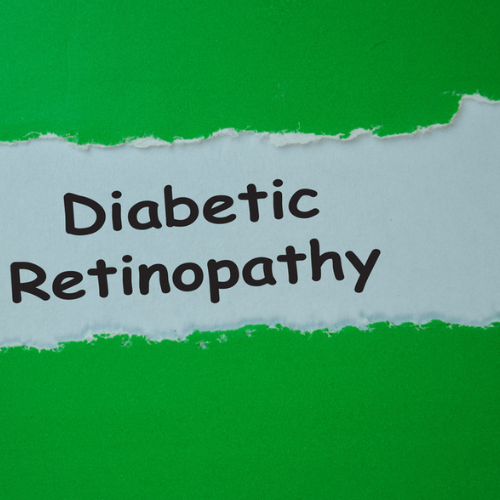Treatment of Diabetic Retinopathy


This article covers the causes and treatments of diabetic retinopathy, the eye disease caused by diabetes. Diabetic retinopathy is a leading cause of preventable blindness.
Diabetic retinopathy is an eye condition that can affect most people with diabetes. It occurs when high levels of sugar in the blood damage the small blood vessels in the retina, the part of the eye that detects light and helps you see. This damage can lead to vision problems and, in some cases, even blindness.
There are two main types of diabetic retinopathy:
Non-proliferative Diabetic Retinopathy (NPDR): In this early stage, the blood vessels in the retina become weak and may leak fluid or blood. This can cause blurriness in your vision.
Proliferative Diabetic Retinopathy (PDR): In more advanced stages, the damaged blood vessels trigger the growth of new, abnormal blood vessels. These new vessels are fragile and can lead to severe vision problems, including retinal detachment and blindness.
Causes of diabetic retinopathy
Having too much sugar in the blood over an extended period of time can lead to diabetic retinopathy. Here’s how it happens:
Damage to Blood Vessels: High blood sugar levels can damage the delicate blood vessels in the retina. This process is often referred to as microvascular damage. The exact mechanisms are not fully understood, but prolonged exposure to elevated glucose levels can harm the cells lining these tiny blood vessels.
Blood Vessel Weakness: As the blood vessels in the retina sustain damage, they become weaker and more permeable. This means they can leak fluids, including blood and other substances, into the surrounding retinal tissues. This leakage can lead to swelling and damage to the retinal cells.
Reduced Blood Flow: Weakened blood vessels may also narrow or become blocked, reducing the supply of blood and oxygen to the retinal tissues. This insufficient blood flow is a condition known as ischemia and can contribute to the development of retinopathy.
Inflammatory Processes: Hyperglycemia can trigger inflammatory processes in the retina, which further contribute to the damage of blood vessels and the surrounding tissue.
Growth of Abnormal Blood Vessels: In response to the reduced oxygen supply (ischemia) caused by damaged blood vessels, the body may attempt to compensate by triggering the growth of new, abnormal blood vessels in the retina. These new vessels, called neovascularization, are often fragile and can lead to complications
- Symptoms of diabetic retinopathy
- Blurred or distorted vision.
- New color blindness or seeing colors as faded.
- Poor night vision (night blindness).
- Small dark spots (eye floaters) or streaks in your vision.
- Trouble reading or seeing faraway objects.
Treatment of Diabetic Retinopathy
Injections (Anti-VEGF Drugs and Corticosteroids)
Anti-VEGF Drugs: Anti-VEGF (Vascular Endothelial Growth Factor) drugs are a class of medications that are highly effective in the treatment of diabetic retinopathy. These drugs, including Lucentis, Eylea, and Avastin, work by inhibiting VEGF, a protein that stimulates the growth of blood vessels. In the case of diabetic retinopathy there are new fast growing blood vessels that are fragile and leak into the retina. By reducing the levels of VEGF circulating in the eye, these drugs help slow down and in some cases even reverse diabetic retinopathy.
Corticosteroids
Corticosteroids are anti-inflammatory medications that can be used to reduce swelling and inflammation in the retina. In cases of diabetic macular edema or other inflammatory components of diabetic retinopathy, corticosteroid injections can be administered into the eye to help alleviate the swelling and improve vision. They work by suppressing the immune response and reducing inflammation.
Laser Treatment (Photocoagulation) of Diabetic Retinopathy
This technique involves using a laser to make tiny, controlled burns in the retina. These laser burns seal off or cauterize leaking blood vessels, reducing the swelling and leakage. It is often used to treat diabetic macular edema and is aimed at preserving or improving central vision.
Panretinal Photocoagulation (PRP), also known as scatter laser treatment, is laser treatment applied to the peripheral areas of the retina to indirectly reduce the growth of abnormal blood vessels. While PRP can be effective in preventing severe vision loss, it may lead to some loss of peripheral (side) vision.
Eye Surgery (Vitrectomy)
When diabetic retinopathy progresses to a point where there is significant vitreous hemorrhage (bleeding into the vitreous gel of the eye) or retinal detachment, vitrectomy may be recommended. During this surgical procedure, the vitreous gel is removed, and any blood or scar tissue causing vision problems is extracted. The vitreous is then replaced with a clear solution. Vitrectomy can help restore or improve vision in cases of severe complications.
Each treatment option is tailored to the specific needs of the individual and the stage of diabetic retinopathy. Early detection and prompt treatment are crucial for preserving vision and preventing the progression of diabetic retinopathy.
Regular eye check-ups are crucial for people with diabetes because the disease often shows no symptoms in its early stages. If detected early, it can be managed and treated to prevent vision loss. Proper blood sugar control, blood pressure management, and lifestyle changes can also reduce the risk of diabetic retinopathy.
Gregory Scimeca, M.D.
Ophthalmologist and Medical Director
The Eye Professionals
Our Locations
